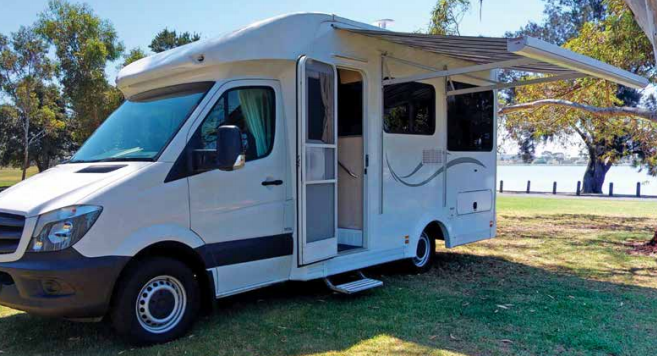
Be sure to inspect all external storage spaces
Despite the increased level of sophistication of motor vehicles, caravans, and motorhomes, service intervals over the last 20 years have grown considerably.
Thirty years ago, oil changes, brake checks, spark plug renewal, distributor point settings, and oil/water/air filter changing were commonplace events, done every 3000 miles (remember them) or so. Saturday afternoons were often spent in, and around, a car. These days much has changed in the maintenance and servicing departments. Not only have service intervals increased, but because of computer technology, there is much less that many of us can do. A consequence of that is, I suspect, that many of us have become a bit slack about the things we can do, some of which are essential to the ongoing reliability of our motorhomes.
For the most part (annual or sooner, depending on distance travelled) servicing motorhome mechanical parts is better left to the experts, especially because engine diagnosis these days is quite a sophisticated process. This is particularly essential during a warranty period, so that potential faults are fixed before they become bigger or more expensive. In particular, with the cab chassis components during the life of a motorhome, a good mechanic will not only fix existing faults, but give warning as to those that might be occurring in the near future.
Regular roadworthy checks can be done by just about anyone and include oil and water/coolant levels, transmission and brake fluid levels, tyre pressures, wiper blades, and all light functions. I know this is a bit radical, but a good read of the relevant service manual will tell you all you need to know.
Whilst the above two concern the motor part of a motorhome, functional checks should be carried out in the ‘home’ area on anything that opens, closes, heats up, cools down, pumps or seals. Included in the functional checks should be an inspection of any areas that are not readily observed, like under beds and seats, in the backs of cupboards and just about anywhere that might get damp, either from condensation or water leaks. Your nose and a good torch are often all that is needed, and with that, there are a few things you can do yourself.

Giving your motorhome a regular and thorough clean is a good way to flag any potential issues
YOUR CALL
A fairly easy way to undertake an inspection, is to give your motorhome a regular and thorough clean both outside and in. That includes the awning, upholstery, window blinds, curtain tracks, and anywhere that dust and dirt might collect. Cleaning and polishing (where needed) often shows up problem areas fairly quickly too.
In this process, all seals can be inspected, door, window, and awning functions checked, body damage noted, and a list made of items that require attention. A little something that many prefer not to think about until it is too late is the toilet cassette housing. The cassette itself has seals and since there are a few moving parts it’s good to clean, not only the cassette itself, but the entire cassette housing. As with a number of items, prevention here is definitely better than cure. Along the same lines, grey water tanks need a bit of TLC from time to time. Usually the first clue to a problem is a ‘pong’ from one of the lower drains.
An area often forgotten because it is more difficult to get at is the rooftop. Solar panels in particular function better if clean. Care is required here and the recommendation is that it be done on level ground with a good ladder, and any cleaning be done with an extension brush whilst still standing on the ladder.
Floor and ceiling vents tend to be taken for granted but they do get dirty, in some cases very badly. The usual result is a slower air flow but in the case of a fridge for example, impeded air flow will affect fridge operation.
This also fits into the professional level but since most batteries are sealed these days, an electrolyte level check isn’t necessary, however many a motorhome has a battery management system and this can be used at any time to check battery and battery charger condition.
Slide-outs have a number of mechanical functions and most tend to have a recognisable sound when opening or closing. It’s helpful to know yours and recognise when there is some change in operation. Although mostly hand operated, the same applies to pop-top roofs and the increasing trend of using drop-down beds.
LEAVE IT TO THE PROFESSIONALS
Generally speaking most 240V mains electrical items are best left to licensed persons to attend to. However, there is one exception. The humble power cord kills more people than just about any other form of electrocution. Consequently, a regular visual check on the insulation and condition of both plug and socket is recommended. Clues to look for are damage to the outer sheath of the cable, exposed copper conductors, and plugs/sockets with heat damage – usually melting or a brown colour. It’s not compulsory but I reckon an annual ‘Tag and Test’ is a good idea.
Like 240V electrical, LP gas systems are best left to those who are licensed. If your nose or a gas detection device tells you there is a leak, a simple check can be done with soap and water on pipe connections, otherwise get a professional check.
CHECK LIST
Here’s a suggested checklist every RV owner should do, to maintain their vehicle:
External
Internal
Category: Features
Written: Tue 01 May 2018
Printed: May, 2018
Published By: